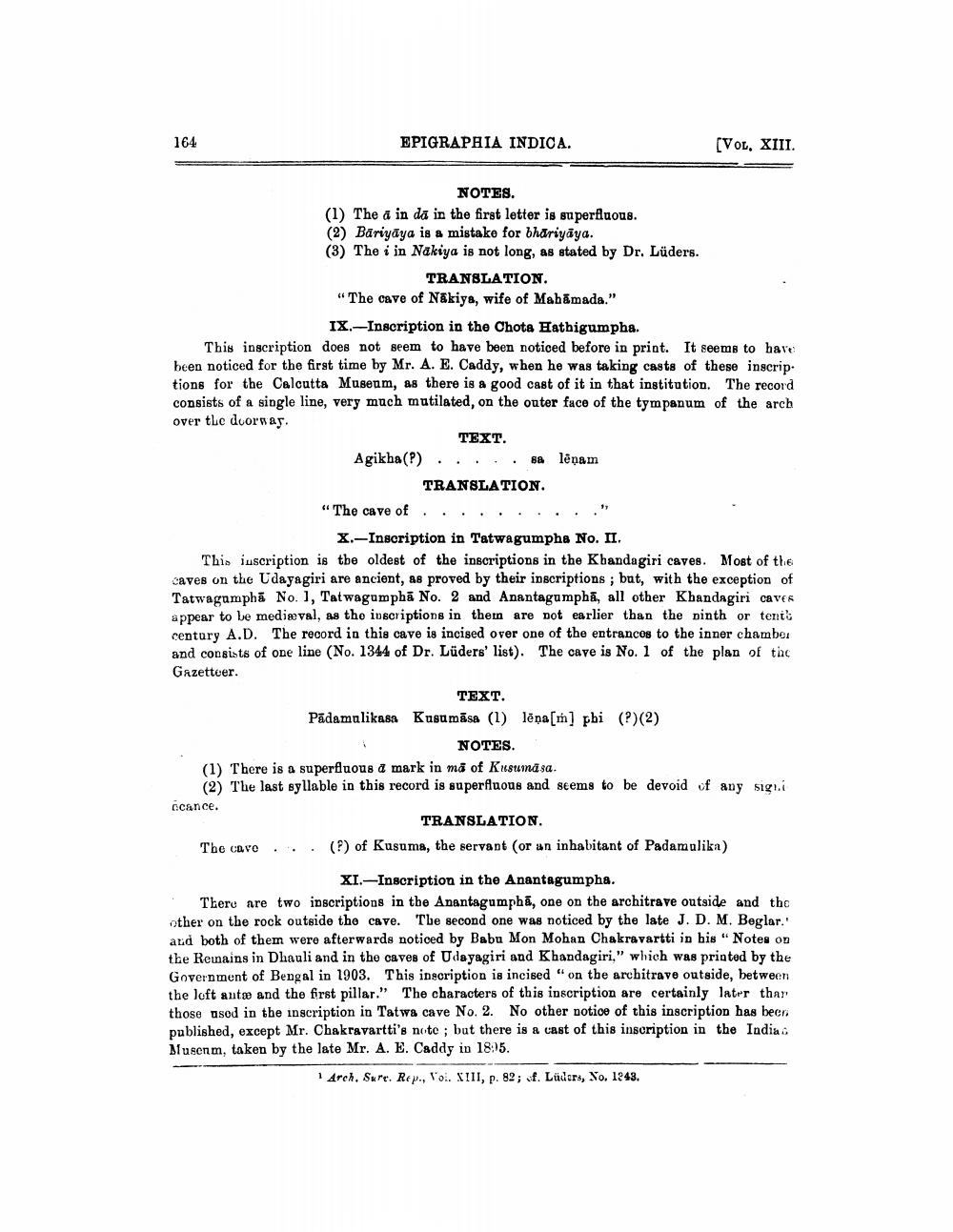________________
164
EPIGRAPHIA INDICA.
(VOL. XIII.
NOTES. (1) The a in da in the first letter is superfluous. (2) Bariyāya is a mistake for bhariyāya. (3) The i in Nakiya is not long, as stated by Dr. Lüders.
TRANSLATION. “The cave of Nákiye, wife of Mahamada."
IX.-Inscription in the Chota Hathigumpha. This inscription does not seem to have been noticed before in print. It seems to have been noticed for the first time by Mr. A. E. Caddy, when he was taking casts of these inscrip. tions for the Calcutta Museum, as there is a good cast of it in that institution. The record consists of a single line, very much mutilated, on the outer face of the tympanum of the arch over the doorway.
TEXT. Agikha(?). .. sa lēnam
TRANSLATION. “The cave of . . . . . . . ."
X.-Inscription in Tatwagumpha No. II. This iuscription is the oldest of the inscriptions in the Khandagiri caves. Most of the caves on the Udayagiri are ancient, as proved by their inscriptions ; but, with the exception of Tatwagamphã No. , Tat wagumphā No. 2 and Anantagumph, all other Khandagiri caves appear to be medieval, as the ivscriptions in them are not earlier than the ninth or tenis century A.D. The record in this cave is incised over one of the entrancos to the inner chamber and consists of one line (No. 1344 of Dr. Lüders' list). The cave is No. 1 of the plan of tac Gazetteer.
TEXT. Pādamulikasa Kusumāsa (1) lēņa[m] phi (?)(2)
NOTES. (1) There is a superfluous a mark in mă of Kisumā sa.
(2) The last syllable in this record is superfluous and seems to be devoid of any sigui ocance.
TRANSLATION The cavo... () of Kusuma, the servant (or an inhabitant of Padamulika)
XI.-Inscription in the Anantagumpha. There are two inscriptions in the Anantagumphā, one on the architrave outside and the other on the rock outside the cave. The second one was noticed by the late J. D. M. Beglar. aud both of them were afterwards noticed by Babu Mon Mohan Chakravartti in bis "Notes on the Renains in Dhauli and in the caves of Udayagiri and Khandagiri," which was printed by the Government of Bengal in 1903. This inscription is incised "on the architrave outside, between the loft ant and the first pillar." The characters of this inscription are certainly later than those used in the inscription in Tatwa cave No. 2. No other notice of this inscription has been published, except Mr. Chakravartti's note ; but there is a vast of this inscription in the Indias Musenm, taken by the late Mr. A. E. Caddy in 1895.
1 Arch. Sure. Rep., Vol. SIII, p. 82; cf. Lüders, No. 1343.




